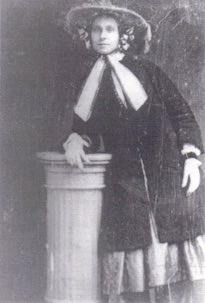“It was a needed instrument to spread abroad the truth of a new gospel to woman, and I could not withhold my hand to stay the work I had begun. I saw not the end from the beginning and dreamed where to my propositions to society would lead me,” said Amelia Bloomer, describing her feelings as the first woman to own, operate and edit a newspaper for women.
Bloomer, a woman of modest means and little education, nevertheless felt driven to work against social injustice and inequity, and her personal convictions inspired countless other women to similar efforts.
Bloomer’s newspaper, The Lily, began in 1849 in Seneca Falls, New York, where Bloomer lived after her marriage. The newspaper was initially focused on temperance, but under the guidance of Elizabeth Cady Stanton, a contributor to the newspaper, the focus soon became the broad issues of women’s rights. An intriguing mix of contents ranging from recipes to moralist tracts, The Lily captivated readers from a broad spectrum of women and educated them, not only about the truth of women’s inequities, but also in the possibilities of major social reform.
This first newspaper became a model for other suffrage periodicals that played a vital role in providing suffrage leaders and followers with a sense of community and continuity through the long years of the campaigns for the right to vote.
Bloomer was also known for her support for the outfit of tunic and full “pantalettes,” initially worn by actress Fanny Kemble and others, including Stanton. Bloomer defended the attire in The Lily, and her articles were picked up in The New York Tribune. Soon the outfit was known as “The Bloomer Costume,” even though Bloomer had no part in its creation. Ultimately, Bloomer and other feminists abandoned the comfortable outfit, deciding that too much attention was centered on clothing instead of the issues at hand.
Bloomer remained a suffrage pioneer and writer throughout her life, leading suffrage campaigns in Nebraska and Iowa, as well as writing for a wide array of periodicals.

